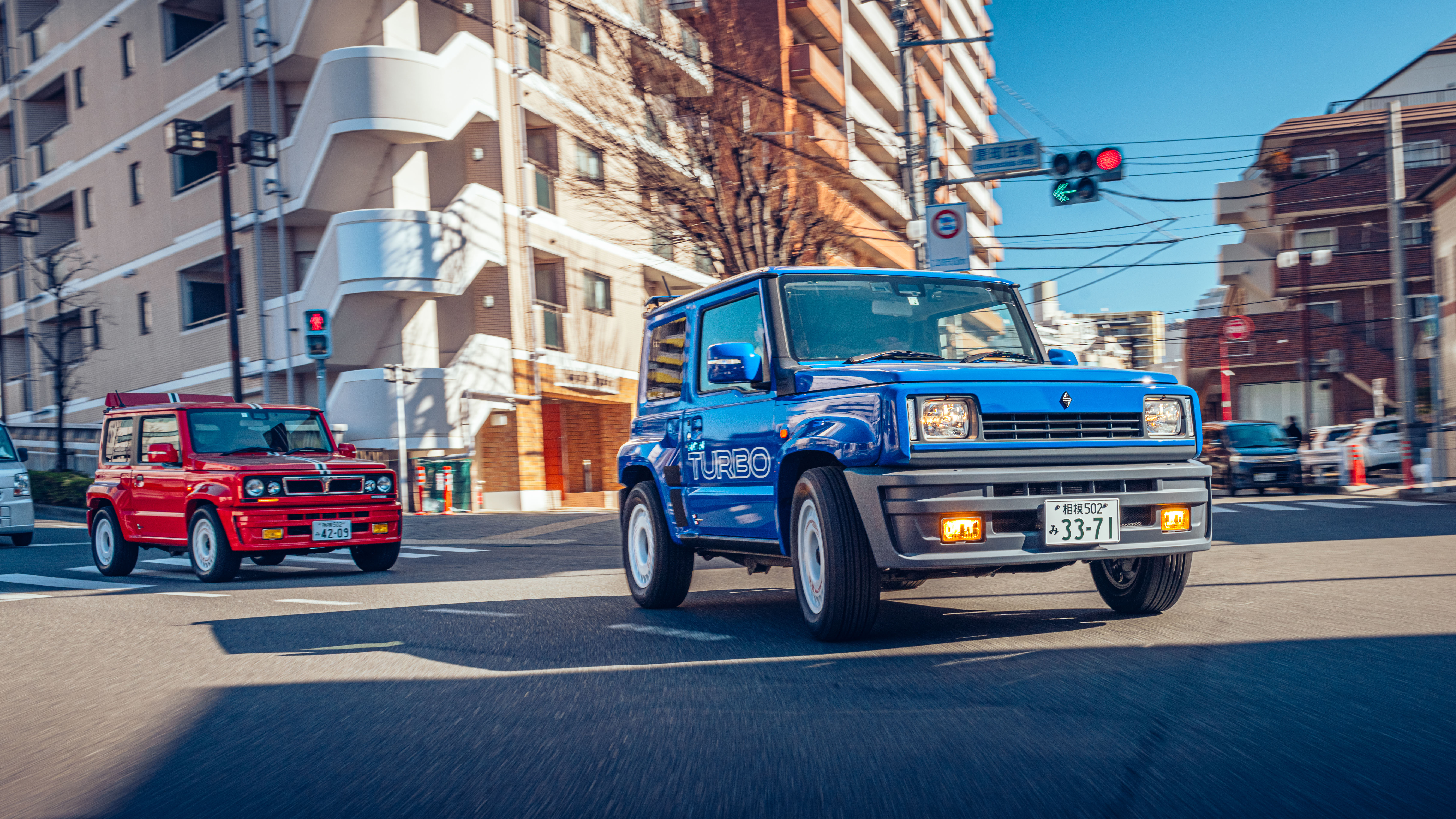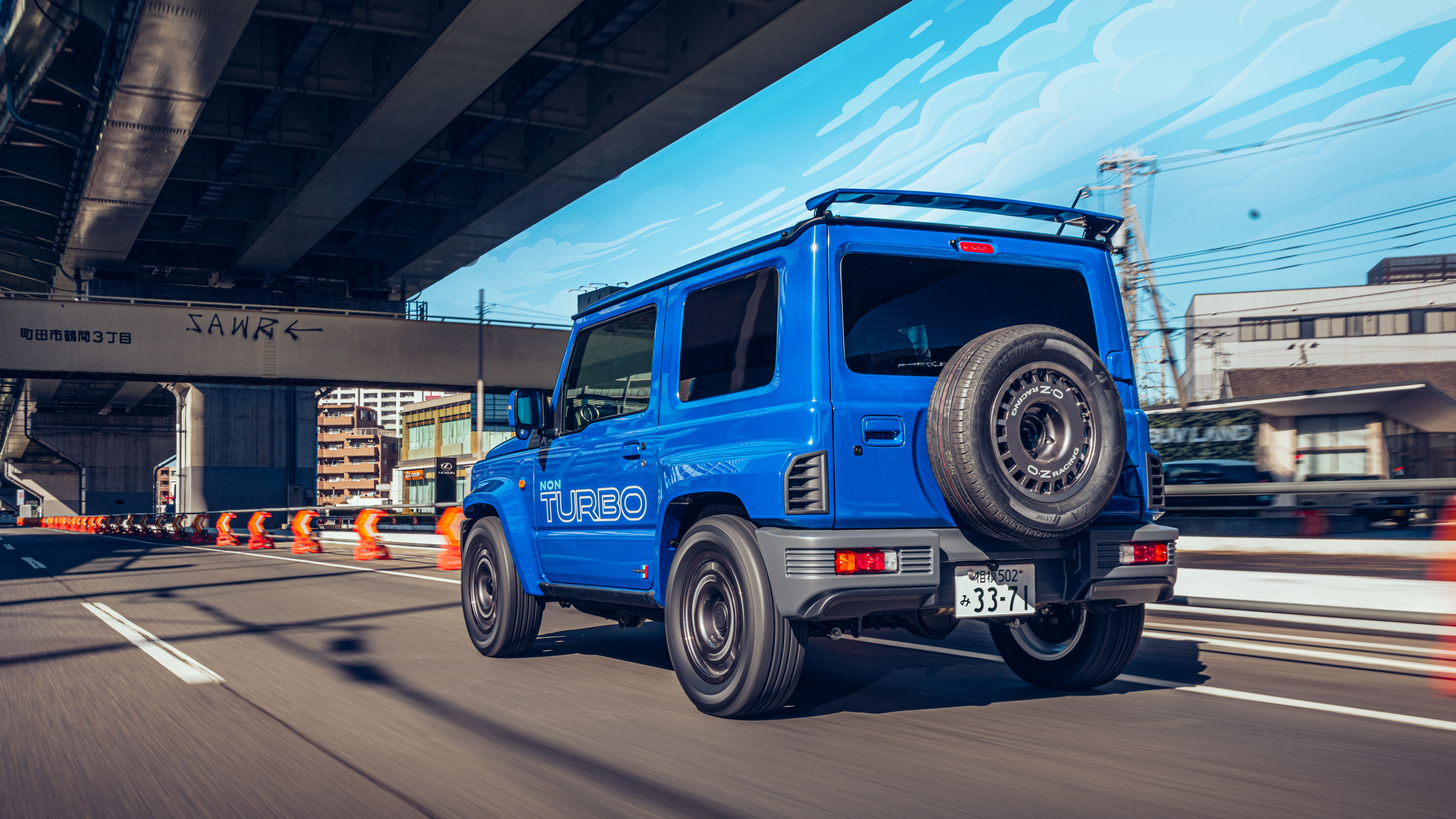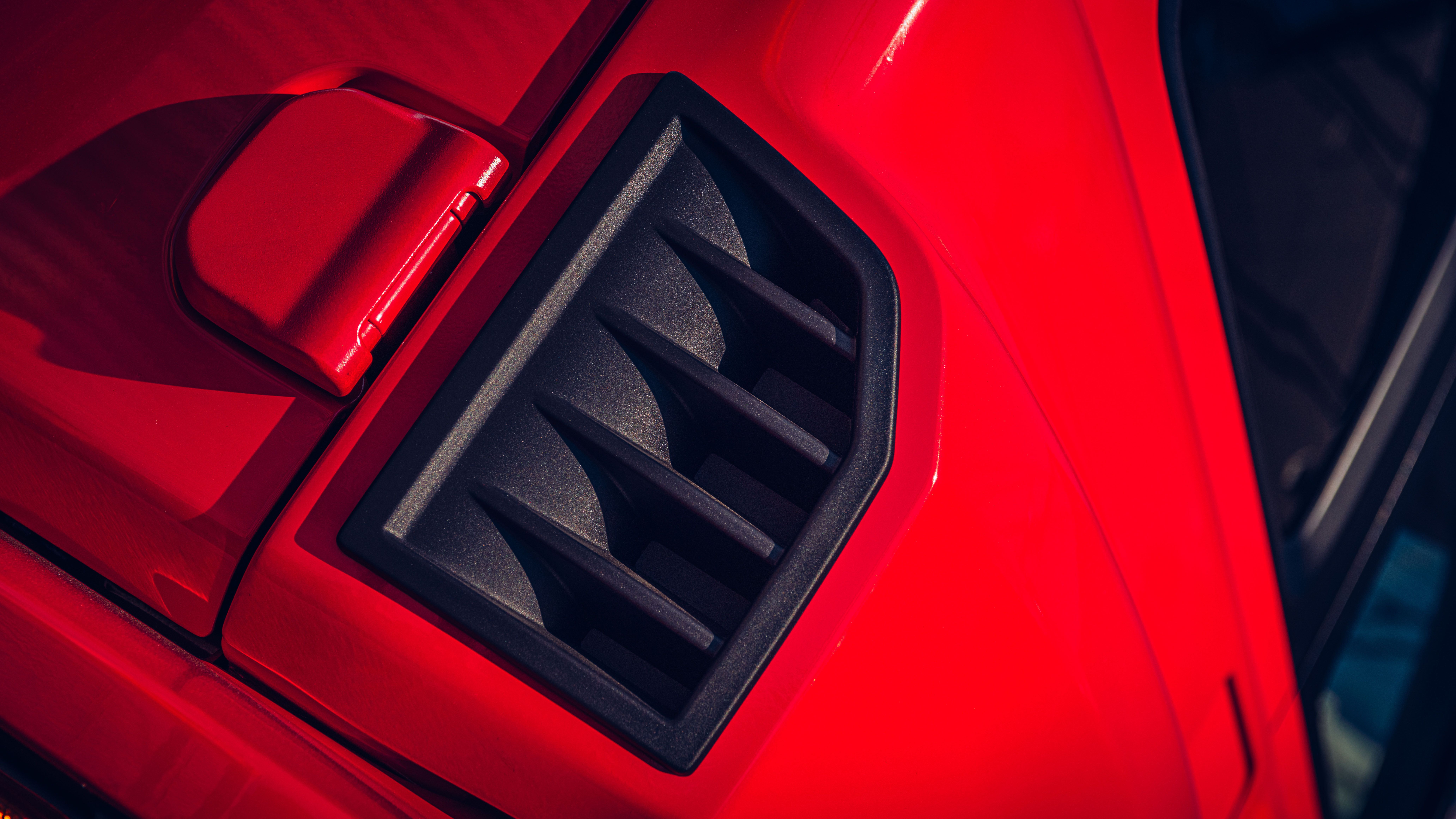
Village of the Damd: driving Japan's adorable R5 and Integrale Jimnys
What do you get when you cross an R5 Turbo with a small Suzuki? This is the company that decided to find out
Stopped at the traffic lights somewhere near downtown Machida in Tokyo prefecture, there’s a pause for consideration. There’s really no getting away from it: from a dynamic point of view, the Suzuki Jimny is... rubbish. The steering has a yawning dead spot from centre to about a quarter turn, presumably to prevent people hoofing them into a corner and immediately flipping onto the roof, the ride is choppy, the ‘handling’ mildly alarming and the brakes mediocre.
It probably doesn’t help that this is a four-speed auto taped to the back of a 658cc three-pot petrol, and the beam axles have the ride comfort and spinal sympathy of a paving slab. And I love it. I really, genuinely love it. Which makes zero sense, until you see the outside.
This Jimny is not special because of how it drives, but because of how it looks. It’s been modified by Japanese company Damd Inc, and it’s a kind of chunky homage to the original Renault 5, as bizarre as that sounds. There’s the flat front and slightly right-handed trapezoidal headlamps, the grille, the bumper – soft-focus cues that stretch all the way back to when the 5 was launched back in 1972.
Photography: Toby Thyer
Then there are the arches and graphics that sort of resemble 1985’s GT Turbo – although you have to get close to see the ‘non’ above the big ‘TURBO’ lettering – and the motorsport wheels. It’s blatantly obvious what this is, and also what it isn’t. A beautiful, weird, original remix.
But that’s not even the whole story. Pottering along next to me is another wearing perverse cues from a Lancia Delta Integrale, and I’ve already poked a remarkably well-finished miniature G-Wagen. I can’t stop smiling. Running around the Tokyo suburbs in a pair of sweet-looking caricatures, passers-by waving and laughing, is a balm for the soul. The drive may be rudimentary, but the vibe is immaculate.
Welcome then, to the world of the Damd.
It’s amazing how such relatively simple modifications can change everything, and the Damd philosophy seems forehead-slappingly simple. Take the square, base Jimny, absorb the styling cues from a previous square-ish icon, and have at it. The use of the Jimny as a base for these mini-mes is inspired: in Japan, if required to meet strict Kei regulations, the Jimny has to come without the flared wheelarches of the export version, and also have tucked bumpers. So the basic car is actually just a blank slate for Damd to work its magic – essentially a bolt-on makeover.
Damd Inc is not, however, some new kid on the block. It was started back in 1982 as a maker of various FRP (fibre-reinforced plastic – basically fibreglass) parts for all sorts of things, getting creative with BMW wheelarches and bumpers for JDM kei cars. Good ones too: Damd went about quietly innovating and creating in the aftermarket sector, winning plenty of awards in the process, both domestic and international.
It wasn’t long before it started doing different cars, trim pieces for manufacturer dealer specials and plenty of racing and drift machinery, a proper business operating outside the mainstream OEMs.
Recognition came on the big screen in the shape of a Damd-kitted Evo VIII in the second instalment of the Fast & Furious franchise (the greeny/yellow one), and project cars have always abounded, from the LFA-inspired LFT-86 to untold amounts of SEMA show cars and kei oddities – check out the N-Van Malibu for a cuteness overload. The company has a fine – and extensive – back catalogue.
Top Gear
Newsletter
Thank you for subscribing to our newsletter. Look out for your regular round-up of news, reviews and offers in your inbox.
Get all the latest news, reviews and exclusives, direct to your inbox.
But it wasn’t until 2019 and the current Jimny that the brand came up with the ‘Little G’, a stylised interpretation of the Mercedes G-Wagen. And a tiny legend was born.
Of course, you may wonder how things like copyright might be involved. Back at Damd’s HQ in Shimotsuruma, Yamato City, president Shogo Omodaka, whose father started the company, explains that while the cars have obvious influences, the details are influences, rather than copies. And while they’re executed with tidy precision, they aren’t trying to confuse anyone.
One also assumes that the bigger car companies have enough self-confidence not to be threatened by such obvious homages: brutal legality would leave them looking more than a bit foolish. But the fact remains that Damd is a furious little creative engine of a place, pumping out bodykits and styling for various streams of kei cars and vans, different styles of Jimny and accessories like wheels – both steering and road – trim parts and roofracks.
Running around the Tokyo suburbs in this pair is a balm for the soul
There’s art in the mix, and Damd Sound Effects which produces a curated road-trip playlist every couple of weeks. Even the office space in the garage looks like the New York loft of a particularly cutting-edge advertising company. It’s an automotive ecosystem, rather than just a parts supplier.
Apart from the clever design, the other thing about the product is the execution. The parts themselves are top quality. The bits are designed and reviewed, then 3D-printed to make sure everything looks to scale and fits properly. Moulds are then created and the parts made, with all the relevant bracing and fixing points.
Fit and finish is very important to the company as a whole, Shogo-san making the point that the cars should look like they were meant to be, rather than some backstreet cobble together. There might be a slight element of sticky-backed plastic in the idea, but the execution is better than OEM good. Panel gaps are tight, finish better than factory, and the un-Renault was a standing testament; the only cheap plastic bits being in the stock Suzuki interior, which, despite the addition of some Bride seats, is as humble as it started.
But the best bit is that the kits are also not terribly expensive in the grand scheme of bespoke car modification. Which makes sense when the base car isn’t an exotic. For example, if you already have a Jimny, the ‘Little G’ Aventura G-Wagen-alike is £5,600 for the basic kit, another £600 painted (in Japan). So a total of about £6,200, though you have to add on things like wheels and chunkier tyres, lights, roofracks and all the other jewellery.
The non-Turbo non-Renault would likely be similar, but with a premium for UK importation. And import you can – Damd has a UK dealer in the shape of Sumo Power in Cambridgeshire – always a bonus. The full look would add up, but with a cheap-ish base car, you’d be getting something properly interesting for the price of the optional paint on a supercar.
And that seems to be the point: being interesting and accessible rather than fast, or expensive. Talking to the people that run it, the whole Damd process, the entire design team, is in on the joke. These aren’t cars trying to convince you that they’re more expensive or better than they are: they’re just pure amusement. They’re creative and brilliant and more eye-catching than a lot of mid-level supercars, and in a world of too serious faces and competitive breathing, Damd is bringing the humour back, operating outside the normal, but within reach.
They defy convention, and are the better for it. Tradition, it seems, be Damd.










